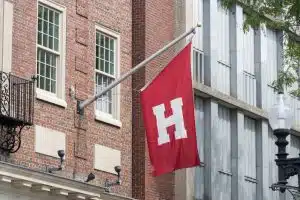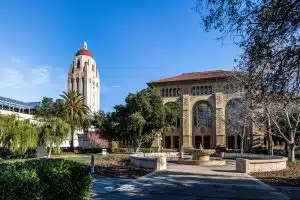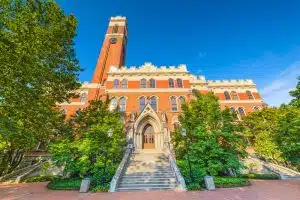Dartmouth Waitlist Acceptance Rate
Entering the world of Ivy League admissions can feel like stepping into a labyrinth. There are so many factors and variables to consider – and rates of acceptance and waitlisting are among the most elusive of them all. Then, from among these iconic establishments, emerges Dartmouth College, distinguished not only for its academic excellence but also for its unique approach to handling waitlisted candidates. A closer look at Dartmouth’s waitlist acceptance rate, specifically, offers a more nuanced grasp of this unique admissions process.
The Basics of Dartmouth’s Waitlist
To begin, let’s look at the fundamental concept of a college waitlist. Known as a kind of ‘maybe’ zone, a waitlist is where schools place students who meet their admissions criteria but for whom there currently aren’t enough spaces. Dartmouth College, like many other academic institutions, employs this system as part of its enrollment strategy.
When it comes to the college admissions process, the waitlist can be both a source of hope and uncertainty for students. It offers a glimmer of possibility, a chance to still be part of the incoming freshman class, even if initially not admitted. However, it also means being in limbo, waiting for a decision that may or may not come.
What is a College Waitlist?
The college waitlist is a tool used by colleges and universities to ensure they have a full freshman class each year. Think of it like a backup list. Even if admitted students choose to go elsewhere, the school still gets a full roster by accepting those on the waitlist.
Being on a waitlist can be a bittersweet experience. On one hand, it means that the college recognizes your potential and believes you would be a valuable addition to their community. On the other hand, it also means that you were not among the initial wave of accepted students, leaving you in a state of uncertainty.
It’s important to note that being on a waitlist doesn’t guarantee admission. The specific number of students who get admitted from the waitlist varies from year to year, and from college to college. Factors such as the number of students who decline their offers of admission, the college’s enrollment goals, and the strength of the waitlisted applicants all play a role in determining how many students will ultimately be admitted from the waitlist.
Dartmouth’s Unique Approach to Waitlisting
Dartmouth’s approach to waitlisting is somewhat unique among Ivy League schools. The College maintains a sizable waitlist to account for the uncertainties inherent in the admissions process. By having a larger waitlist, Dartmouth ensures that they have a pool of qualified students to choose from if spaces become available.
Furthermore, Dartmouth often extends admissions offers to waitlisted students even after the May 1st decision deadline. This highlights the College’s proactive approach to managing its waitlist and its commitment to giving every applicant a fair chance.
Another distinguishing feature of Dartmouth’s waitlist process is the College’s actively maintained communication with waitlisted students. Dartmouth understands the anxiety and uncertainty that comes with being on a waitlist, and they strive to provide necessary guidance and keep students updated about their status. This open line of communication helps students feel supported throughout the process and allows for more cohesive management of the waitlist.
Overall, Dartmouth’s waitlist process reflects the College’s commitment to fairness, transparency, and maintaining a diverse and talented student body. While being on a waitlist can be challenging, it also presents an opportunity for students to showcase their continued interest in the College and potentially secure a spot in the incoming class.
Factors Influencing Dartmouth’s Waitlist Acceptance Rate
A variety of factors influence Dartmouth’s waitlist acceptance rate. By understanding these determinants, prospective students can gain valuable insight into what might potentially sway their waitlist outcome.
The Role of Student Yield
Student yield is a crucial aspect of the waitlist acceptance equation. It refers to the percentage of accepted students who actually choose to enroll. If the yield is lower than anticipated, Dartmouth (like any other college or university) would turn to its waitlisted candidates.
There are several reasons why student yield may be lower than expected. One factor is the competitiveness of other colleges and universities. Students who are accepted to multiple institutions may choose to attend a different school, leaving a spot open for a waitlisted student at Dartmouth. Additionally, financial considerations can play a role in student yield. Scholarships, grants, and other financial aid packages offered by other schools may sway a student’s decision, potentially opening up opportunities for waitlisted students at Dartmouth.
Impact of Early Decision Applicants
Early Decision (ED) applicants can also significantly impact the waitlist acceptance rate. Early Decision is a binding agreement where the student commits to enrolling in the college if accepted. If the number of ED applicants is high, the number of spaces left for Regular Decision and waitlisted students can decrease.
One reason for the high number of ED applicants is the perceived advantage it provides in the admissions process. Students who apply early decision often believe that it increases their chances of acceptance. This can result in a larger pool of early-decision applicants, leaving fewer spots available for waitlisted students. Additionally, the commitment to enroll if accepted can further limit the number of spots available for waitlisted students, as the college needs to ensure it fills its incoming class.
The Effect of Gap Year Students
Dartmouth’s liberal gap year policy also affects its waitlist acceptance rate. Since a good number of students decide to take a gap year and defer their admission to the next year, the number of places available for the current year’s waitlisted students can be significantly reduced.
Gap years have become increasingly popular among students as a way to explore other interests, gain experience, or pursue personal growth before starting college. Dartmouth’s policy allows students to defer their admission for a year without losing their place in the incoming class. However, this means that fewer spots are available for waitlisted students in the current year, as some of those spots are already reserved for gap year students who will enroll the following year.
It is important for prospective students to consider the impact of gap year students on the waitlist acceptance rate. While taking a gap year can be a valuable experience, it is essential to understand that it may reduce the number of spots available for waitlisted students in the current admissions cycle.
Decoding the Waitlist Acceptance Rate
Understanding the Numbers
Dartmouth’s waitlist acceptance rate can appear confusing without context. It’s important to know that the rate varies significantly from year to year. For instance, there can be an acceptance rate of almost 10% one year and only about 2% another year. These fluctuations largely depend on the factors discussed earlier.
Factors such as the number of applicants, the strength of the applicant pool, and the availability of spots in the incoming class can all contribute to the variation in the waitlist acceptance rate. Admissions committees carefully consider these factors when determining how many students to admit from the waitlist.
Comparing Dartmouth’s Rate to Other Ivy Leagues
When compared to other Ivy League institutions, Dartmouth’s waitlist acceptance rate is decidedly competitive. On average, its rate is generally higher than the likes of Harvard and Yale but lower than Columbia and Cornell. These comparisons should, however, be taken with a grain of salt since each school’s individual admission policy and factors can significantly influence these rates.
It’s important to note that Ivy League schools have highly selective admissions processes, and being placed on the waitlist is already an achievement. The waitlist serves as a way for the admissions committee to consider additional qualified applicants if spots become available in the incoming class.
While Dartmouth’s waitlist acceptance rate may be lower than some of its Ivy League counterparts, it’s essential to remember that the overall acceptance rates for these institutions are already extremely low. The competition for admission to Ivy League schools is fierce, and being on the waitlist demonstrates that the applicant is highly qualified and deserving of consideration.
Ultimately, the waitlist acceptance rate is just one piece of the puzzle when it comes to understanding the admissions process. It’s crucial for prospective students to focus on presenting their best selves in their applications and to have a well-rounded approach to their college search.
Strategies for Getting Off the Dartmouth Waitlist
Given the intricacies of Dartmouth’s waitlist process, what strategies can prospective students adopt to improve their chances of getting an offer?
Being placed on the waitlist can be a frustrating experience for prospective students eagerly awaiting a decision from Dartmouth College. However, there are several strategies that can be employed to increase the likelihood of receiving an offer of admission. These strategies involve demonstrating continued interest in Dartmouth and updating your application with any significant achievements or accomplishments since applying.
Demonstrating Continued Interest
One effective strategy is to express continued interest in Dartmouth. This can be achieved by keeping in touch with the admissions office, visiting the campus if possible, and sending updates on significant accomplishments or awards received since applying. By maintaining communication with the admissions office, prospective students can demonstrate their enthusiasm and commitment to attending Dartmouth if given the opportunity.
Visiting the campus can also provide an opportunity to engage with current students and faculty, gaining a deeper understanding of the Dartmouth experience. This firsthand knowledge can be invaluable when crafting a compelling letter of continued interest or when discussing Dartmouth in an interview, should the opportunity arise.
Sending updates on significant accomplishments or awards received since applying can also help to strengthen an applicant’s case for admission. Whether it’s winning a prestigious competition, publishing an article in a notable publication, or achieving a personal milestone, sharing these achievements with Dartmouth can showcase an applicant’s growth and potential since their initial application.
Updating Your Application
In addition to demonstrating continued interest, updating your application with any significant achievements or accomplishments can also improve your chances of getting off the waitlist. Dartmouth allows applicants to submit updates to their application, providing an opportunity to showcase any new developments that may strengthen their candidacy.
- Update your test scores: If you’ve taken a standardized test again and scored higher, let Dartmouth know. Improved test scores can demonstrate academic growth and a commitment to excellence, which are qualities highly valued by the admissions committee.
- Discuss new extracurricular achievements: If you’ve won any competitions, had any work published, or reached any other significant milestones since submitting your Dartmouth application, be sure to relay this information to them. These accomplishments can highlight your talents, dedication, and potential contributions to the Dartmouth community.
By providing Dartmouth with updated information, applicants can ensure that the admissions committee has a comprehensive and up-to-date view of their qualifications and achievements. This can help distinguish them from other waitlisted candidates and increase their chances of receiving an offer of admission.
The Emotional Aspect of Being on a Waitlist
The waitlist journey, filled with uncertainty and hope, can be emotionally taxing for students. It is a time of mixed emotions, as students eagerly await a decision that could shape their future.
Dealing with uncertainty is one of the biggest challenges of being on a waitlist. The constant questioning of whether or not they will be accepted can create stress and anxiety. Students may find themselves constantly checking their email or refreshing the admissions portal, hoping for any update. This rollercoaster of emotions can be exhausting, leaving students feeling mentally drained.
However, it is important for students to find constructive ways of dealing with these feelings. One strategy is to focus on other college acceptances. Reminding themselves of the achievements they have already accomplished can help alleviate some of the pressure and uncertainty. Celebrating these accomplishments can also boost their confidence and remind them that they are deserving of a place at a great institution.
Engaging in relaxing activities can also be beneficial during this time. Taking time for self-care and doing things that bring joy and relaxation can help students take their minds off the waitlist and reduce stress. Whether it’s going for a walk in nature, practicing mindfulness, or indulging in a favorite hobby, finding ways to unwind and recharge is essential.
Moreover, it’s important to keep a positive but realistic mindset while on a waitlist. It’s healthy to hold onto hope and believe in the possibility of being accepted, but it’s also wise to make other plans considering the inherent uncertainty of this process. Exploring alternative options and researching other colleges that align with their interests and goals can provide a sense of security and control.
Maintaining Hope and Patience
Lastly, please remember that being on the waitlist does not reflect your academic capabilities or future success. It’s important to remind yourself that this is just one part of your journey, and there are many paths to success. The admissions process is complex and influenced by numerous external factors and trends that are beyond your control.
It can be challenging to maintain hope and patience during this time, but it is crucial. Waitlisted students often receive their rightful place under the sun, whether it is at the college they initially hoped for or another equally accepted institution. It may take time, but good things come to those who wait. It’s essentially a game of patience and steadfast hope.
Remember, you have worked hard to get to this point, and regardless of the outcome, you should be proud of your accomplishments. The waitlist is just a temporary hurdle, and no matter where you end up, you have the potential to thrive and succeed.








































